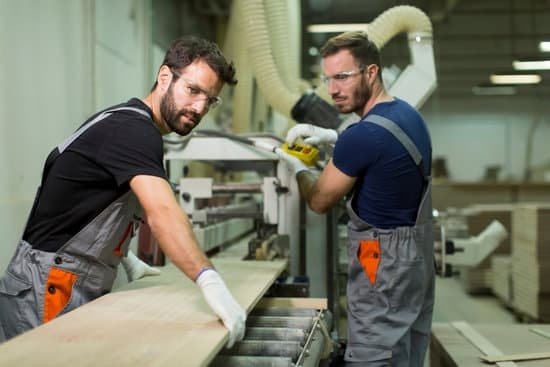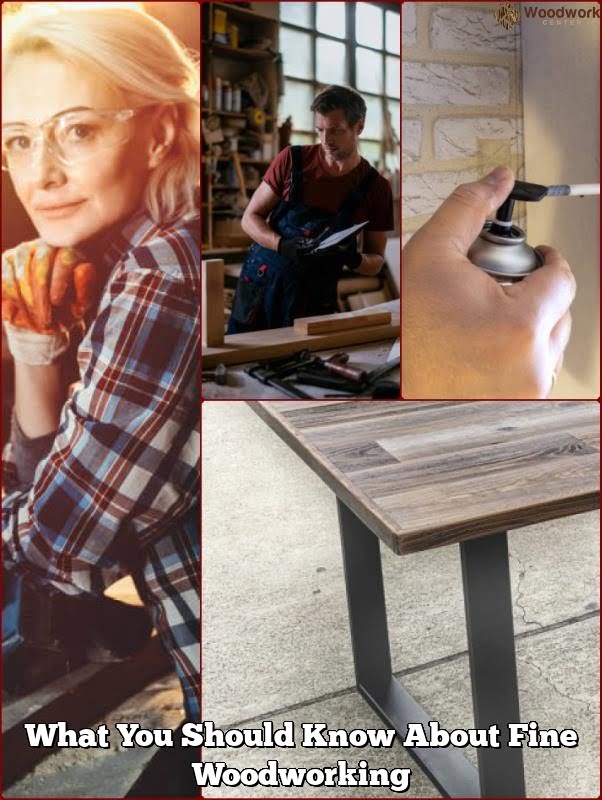Introduction
Fine woodworking is a craft that involves the creation of beautiful and functional pieces of furniture, decor, and artwork made from wood. It requires an exceptional level of skill, precision, and attention to detail in order to construct something that can be seen as a symbol of beauty, functionality, and quality for years to come.
From carving intricate designs out of blocks of raw wood to constructing cabinets or chairs made with advanced joinery techniques”fine woodworking requires immense amounts of patience and dedication to master. The products created through this craft can range from kitchen appliances to delicate ornaments used for decoration. These unique items often become family heirlooms since they are crafted with such careful accuracy over time.
The benefits of fine woodworking are plentiful ” it’s proven to be a great outlet for reducing stress while also exercising creative skills as well as motor skills. The act of working with wood gives off an aroma promoting calmness which is essential in any creative process. Furthermore, many people have claimed that being able to have the necessary tools and supplies on hand allows them to work on projects during their spare time resulting in higher productivity rates throughout their day. In addition, creating something with one’s own hands often provides a sense fulfillment that cannot be achieved otherwise ” allowing them take pride in the results they put forth into the world.
Different Types of Fine Woodworking Techniques
One of the most popular fine woodworking techniques is turning. Turning involves crafting a wooden piece by shaping it on a lathe and playing with an array of chisels, gouges and scrapers. There are countless types of items which can be made using this method, such as exclusive furniture and unique table accessories.
A second popular technique is joinery. This processes focuses on the craftsmanship of creating joints that will hold the pieces together in high-quality furniture. Examples include dovetail joints, dado joinery, mortise joints, miter joint and splines. The key to successful joinery lies in getting perfect alignment and taking accurate measurements for each piece.
Carving is also a popular technique used for fine woodworking projects. This involves using forculps and chisels to shape a piece into something truly beautiful. Carved items can range from small sculptures to large figureheads or intricate designs on furniture doors & drawers.
Finally, there’s marquetry – the art form of veneering two different woods together by cutting delicate shapes out of one wood before attaching it to another wood surface; examples include colorful patterns displayed on tabletops or cabinets & doors. Marquetry usually involve more than one type of wood due its complexity in design.
Overview of Tools and Equipment Used in Fine Woodworking
Fine woodworking refers to the art of creating beautiful and functional pieces of furniture, cabinets, and other decorative objects out of wood. To complete these projects, the woodworker needs certain tools and equipment. These include saws, sanders, drills, routers, clamps, chisels, measuring tools like rulers and tape measures, hand planes and handsaws. In addition to these manual tools are power tools like jointers, planers, mortising machines, belt sanders and disk sanders. Any good woodwork shop should also be stocked with a variety of abrasives such as sandpaper in many different grits for use with the sanders. Hardware such as screws and nails should be kept on hand along with glues to help build furniture and wood accents for decoration. Finally for finishing the project a well-stocked supply of stains or paint should always be available in addition to brushes for applying them. By taking time to properly organize a workspace and gathering all the necessary tools before starting a fine woodworking project an artist will be able to create unique pieces while exercising their artistic freedom supported by precision machines that can produce intricate cuts with consistency each time they are used.
Benefits of Getting Into Fine Woodworking
Fine woodworking is an extremely rewarding hobby. It allows you to create beautiful, intricate pieces for your home or for sale. Not only does it relieve stress and improve creativity, but it can also provide a financial gain.
Benefits of getting into fine woodworking include the following:
1. Improved Creativity ” Fine woodworking allows you to express your creativity in tangible form by creating beautiful works of art in the form of furniture, toys and sculpture. You can develop skills and learn new techniques while improving your own distinct style. In this way, fine woodworking can be incredibly therapeutic and fulfilling!
2. Increased Self-Confidence ” Working on a project that you are proud of provides a great boost to your self-confidence. With each successful project, feeling more confident and capable become easier with experience and practice.
3. Stress Relief ” The combination of physical activity from sawing, sanding and assembling with concentration needed for critical measurements make working with wood a very calming process for many people. After going through a few projects, making something like a cabinet or table no longer seems as daunting as before; it becomes enjoyable instead!
4. Financial Gains ” Once you become reasonably proficient at making something useful out of wood, there’s always the potential for some additional income (or even more!). Selling custom-made furniture or crafts on Etsy or at craft fairs are two great ways to take advantage of the financial benefits offered by fine woodworking endeavors.
Tips and Strategies for Mastering Fine Woodworking Projects
Fine woodworking is a craft that requires patience, precision, and attention to detail. Taking on a fine woodworking project can be intimidating if you are new to the craft, but there are several tips and strategies that can make your job easier.
First, it is important to thoroughly research any techniques or tools needed for successful completion of the project. Look online or consult experienced crafters for advice and tutorials on how to carve, join, and finish pieces of wood with elegance and accuracy. It may also be helpful to watch experienced craftspersons demonstrate their methods in person or online so you can get more insight into the craft and gain confidence in your own skills as a woodworker.
Second, it’s wise to spend ample time drafting plans for each piece of the project before beginning cutting or assembly. While building from scratch gives you more options in design, order the materials needed ahead of time to save time in the long run. Using detailed measurements is especially crucial for assembling multiple pieces together. Write down all measurements and practice any cutting technique you will use beforehand if possible to reduce mistakes during assembly.
Thirdly, focus on developing your skills gradually by keeping projects relatively small scale at first until you gain confidence in how material behaves when cut or shaped according to specific designs. Start with opening up wood planks into manageable sizes before attempting intricate details like dovetailing joints or carving ornamentation into surfaces. Take breaks between steps instead of pushing yourself too hard physically; hand fatigue can lead to inaccurate cuts which strain accuracy later during assembly stages of a project when discrepancies become more difficult to fix without completely revamping parts of the design itself.
Gallery of Jaw-Dropping Fine Woodworking Projects
Fine woodworking is an art that has been practiced for centuries, used to create stunning pieces of furniture in homes and businesses. With the advent of modern tools, it is becoming even easier to produce awe-inspiring works of art from wood. The Gallery of Jaw-Dropping Fine Woodworking Projects features a number of projects that showcase the skills and hard work involved in creating something special out of the raw material of wood. These projects often involve the use of intricate joinery techniques, carving, finishing, and shaping to produce one-of-a kind works that are both aesthetically pleasing and structurally sound. From finely crafted chairs and tables to exotic sculptures or decorative boxes, these projects offer a unique take on traditional carpentry design. In addition to looking impressive, these fine woodworking articles provide readers with detailed instructions on how they can reproduce their favorite pieces on their own. The utilization of power tools in combination with hand tools make these projects doable even for a beginner who has limited knowledge in the area. Whether you plan on building a simple birdhouse or want to attempt creating an entire bedroom set with your own two hands – there’s something here for everyone who wants to explore what this fascinating craft can bring!
Finding Inspiration, Tutorials, and Resources for Fine Woodworking
Fine woodworking can be an incredibly rewarding hobby and profession. It allows you to turn pieces of wood into beautiful works of art. But where do you start? Fortunately, the internet is full of information, tutorials, and resources to help you get started in fine woodworking.
Finding inspiration for your projects is key when it comes to fine woodworking. With so much content available online, it’s easy to find creative ideas and designs that will help ignite your imagination! Take the time to browse through Pinterest boards or Instagram posts – both popular social media sites have many sources filled with inspirational images and works of art made by fine woodworkers around the world. Additionally, YouTube has a variety of channels dedicated to teaching how-to videos about fine woodworking. Watching these videos can open up a whole new world for aspiring woodworkers.
When taking on a specific project, many websites offer helpful tutorials from top licensed professionals in the field who are willing and able to share their expertise with others. Having a tutorial handy can take away some of the mystery that may come from working with unfamiliar types of wood or trying out new techniques. Furthermore, these websites may also provide lists of quality supplies vendors that you can use for any part of your project such as lumberyards or machine shops near you.
Finally, don’t forget about forums! These are great places where experienced professionals and amateur enthusiasts alike share tips and advice as well as answer questions related to materials, tools and techniques used in different types of fine woodworking projects. Forums are invaluable resources since they offer not just information but personal experiences as well, allowing beginners to benefit greatly from experienced contributors’ knowledge and expertise around this wonderful craftsmanship studio art!
Wrap-up
Fine woodworking projects can be incredibly rewarding. By taking on a project, you learn valuable skills and gain an appreciation for the craft of woodworking. You get to see the progress each day, creating something from nothing. As your project draws to a close, you will feel immense satisfaction knowing that you have created something unique and lasting with your own two hands.
Successfully completing a fine woodworking project also yields practical benefits. You will have access to beautiful custom furniture in any shape or style desired. You may discover an undiscovered talent as a craftsman and use it as an extra source of income by selling your creations to others. Finally, if you ever run into difficulty on future projects, having prior experience will enable you to troubleshoot techniques and come up with creative solutions.
In short, taking on a fine woodworking project can be an immensely rewarding experience both emotionally and practically. From first thought to finished product there is incredible potential for personal growth and invention within yourself and your craftsmanship. Building something special can feel like adding another layer of accomplishment to life that few other hobbies can compete with.

Hi everyone! I’m a woodworker and blogger, and this is my woodworking blog. In my blog, I share tips and tricks for woodworkers of all skill levels, as well as project ideas that you can try yourself.





